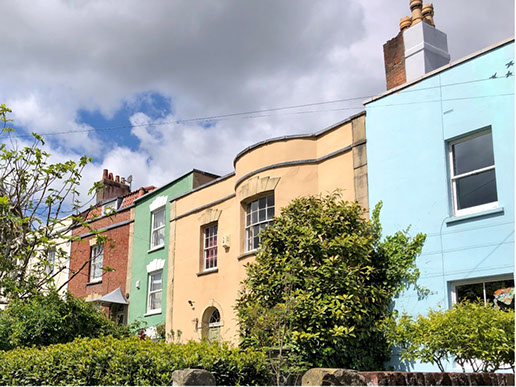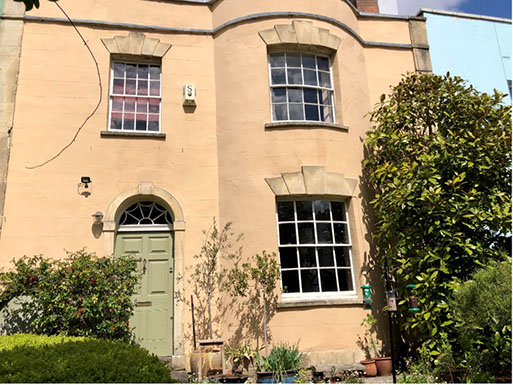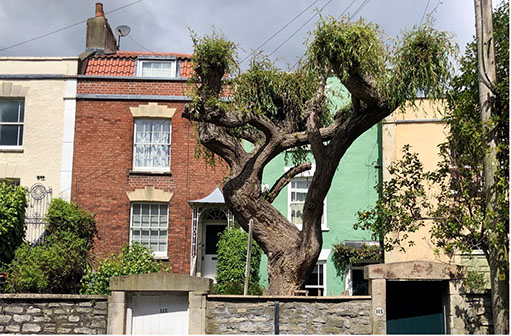
Mary Frost in Bristol
How John Frost's wife and family came to settle in Bristol
After John Frost had been transported, Mary was very short of money. Her furniture and the stock in their draper’s shop in Newport had been sold to help towards John’s defence costs. She later discovered that she had been defrauded of the deeds of her property and her investments by her son, William Foster Geach. Her refusal to admit this publicly allowed rumours about her finances to circulate. An appeal went out to Chartists throughout the country to raise money for Mary and her family, but many were sceptical. In a long letter explaining her financial predicament to the Birmingham Chartists, she wrote the following from the Montpelier district of Bristol,
I mention this in justification of my leaving Newport with a large family, when I ought to have remained and recommenced business, which I should have done, had I been permitted to keep what I had. I was invited to London, to Glasgow, to Merthyr, with a promise of support in business, but I could not commence anywhere without a capital, consequently, I chose to remain here with a very limited income, in preference to struggling with the business, without the means of carrying it on as I used to do.
4 Montpelier June 1841(1)
Bristol was a city with which Mary had connections and she suggests she was offered help to settle there. In addition, Bristol was a centre of Chartist activities.(2) It had a Female Patriotic Society, a newly formed Young Men’s Charter Association, a Chartist choir, the Bristol Democratic Harmonic Society, and a Chartist Co-op. The Newport Working Men’s Association had originally been an offshoot of the Bristol Association and Chartist speakers from both areas were regularly invited to each other’s meetings. Mary may well have given hospitality to these Bristol members. It appears her Bristol Chartist friends offered her the support she needed.
Their new home in Montpelier Buildings, at the top end of what is now Richmond Road, had been built in 1823 in the increasingly fashionable semi-rural, elevated suburb. Its space and fresh air attracted many affluent Bristol residents who preferred it to the older, overcrowded city centre. This beautiful suburb with its elegant Georgian buildings is now a conservation area and numerous houses are listed buildings. Having said that, the disposal of sewage at that time was just as primitive as in Newport, there was no street lighting and Mary would have shared a well and communal pump for water.
Richmond Road has been renumbered a number of times since 1840. Mary’s home in the 1841 census was 4 Montpelier Buildings. For some years this house became known as Waverley Cottage but other houses in the row kept their original numbers. A resident named Mr William Brown moved into number 2 Montpelier Buildings before the 1861 census and stayed there for over fifty years. In 1911 his address was 113 Richmond Road, the name Montpelier Buildings having fallen out of use years before. We can therefore safely assume that Mary’s was the house now numbered 117.

Montpelier Buildings with number 1 the white house on the left. Number 4, Mary’s home, has bow windows.

Mary’s house, now a Grade 2 listed building

Number 2 Montpelier Buildings, now 113 Richmond Road, is a Grade 2 listed building.
The daily lives of the Frost family residing in the large city of Bristol would have been very different from their lives in Newport. The population of Bristol in 1841 was 144,803 compared with Newport’s of about 20,000. The variety and number of shops, the theatres, concert halls, and meeting places – and the wealth in Bristol - were a far cry from Newport. The fashionable Rennison’s Public Baths was on their doorstep and Bristol Zoo in Clifton, too. Temple Meads station opened in 1840, and Bristol was connected to London by rail in 1841. Newspapers from London could be delivered the following morning.
In Newport they had lived in the heart of the town but in Bristol they lived over a mile uphill, north east of the city centre. This is not an exceptional distance to walk, especially in those days when all but the rich expected to walk wherever they wanted to go. To get around they could have caught the public omnibus or hired a hansom cab. There were many Hackney carriages which held four people and had a fixed fare. Everyday shopping could be done in their local shopping street.
Although she planned to return to Newport she had, in fact, left her home town for good. It was about 1845 that any expectation that Mary and her family would emigrate to join John in Van Diemen’s Land was finally shelved. Sometime in the latter half of the 1840s, Mary and her daughters moved to what was to become their permanent home at 30 Stapleton Village, just under two miles east from their previous home. It became known as the Frost House.
(1) Northern Star 17th July 1841
(2) Malcolm Chase A Brief History of Chartism, BBC History Extra, historyextra.com
See also item 5 "Frost's House in Bristol" in eMag No 20 go to page
John Frost's Final Resting Place by Richard Frame go to page
Information about Bristol
Morgan, John A Brief Historical Sketch of Bristol (1849) H & A Hill, Castle Green
Wright, Mary Montpelier A Bristol Suburb (2004) Phillimore & Co.









